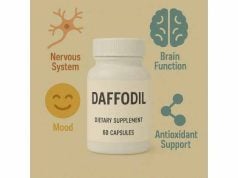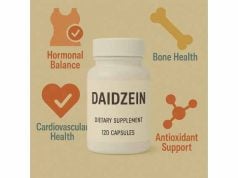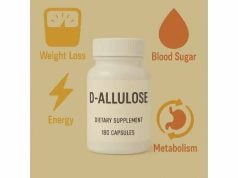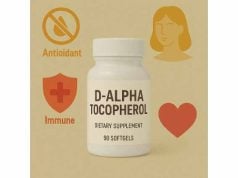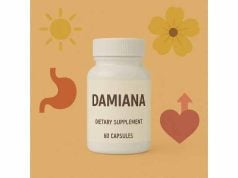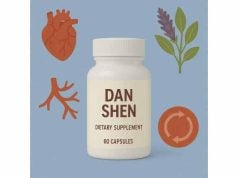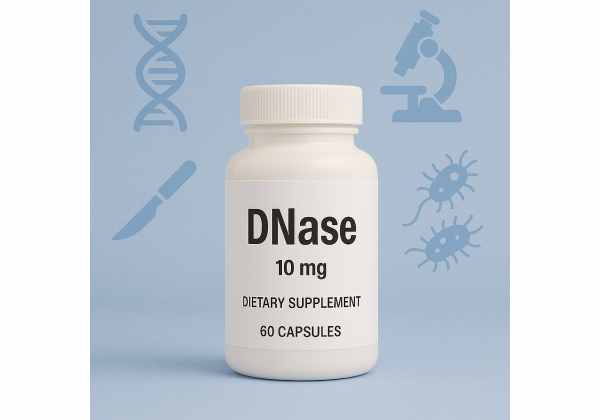
DNase (deoxyribonuclease) is an enzyme that cuts DNA. In medicine, the form you’ll hear most about is dornase alfa (recombinant human DNase I), delivered by inhalation to thin sticky mucus in the lungs. By breaking down extracellular DNA—much of it shed from white blood cells during infection—DNase decreases sputum viscosity, improves airflow, and can help reduce pulmonary exacerbations in selected people with cystic fibrosis (CF). DNase has also been studied in other settings, such as complicated pleural infections (via intrapleural administration alongside a clot-dissolving drug) and, more recently, as an anti-inflammatory strategy in viral pneumonia, though evidence outside CF is mixed. This guide explains how DNase works, where it helps, how to use it correctly, common pitfalls, safety considerations, and what the latest research means for patients and clinicians.
Essential Insights for DNase Users
- Inhaled dornase alfa can improve lung function and reduce exacerbations in cystic fibrosis.
- Standard dose is 2.5 mg by nebulizer once daily; some patients may benefit from 2.5 mg twice daily.
- Do not mix DNase with other nebulized drugs in the same cup; store ampules refrigerated.
- Avoid if you’ve had hypersensitivity to dornase alfa or Chinese hamster ovary (CHO) cell products.
Table of Contents
- What is DNase and how it works
- Proven benefits: where DNase makes a difference
- How to take DNase: dosage and timing
- Who should use DNase—and who should avoid it
- Side effects, interactions, and troubleshooting
- What the research says now (2025 update)
What is DNase and how it works
At its core, DNase is a DNA-cleaving enzyme. The clinically used version, dornase alfa, is a lab-made copy of human DNase I. It’s formulated for inhalation so it can act directly in the airways, where it targets extracellular DNA (ecDNA)—a key component of thick, purulent sputum. In chronic airway infections and inflammation (especially in cystic fibrosis), large numbers of neutrophils migrate into the lungs. When these cells break down or release neutrophil extracellular traps (NETs), they spill long strands of chromatin (DNA plus proteins) into mucus. These DNA polymers make secretions viscous and adhesive, clogging small airways, impairing ciliary motion, and trapping bacteria.
Dornase alfa cuts those DNA strands into shorter fragments. In practical terms, two things happen:
- Mucus rheology shifts: viscosity and elasticity drop, secretions become less sticky, and cilia and cough can move them more effectively.
- Airflow improves: with less plugging, more air reaches distal bronchi, which supports better gas exchange and reduces the work of breathing.
Because dornase alfa acts locally in the airways and is minimally absorbed systemically, it has a favorable pharmacokinetic profile for chronic use in CF. Measurable concentrations appear in sputum within minutes of inhalation, and serum levels do not accumulate with standard dosing. The formulation is preservative-free and designed to be nebulized without dilution.
Beyond the lungs, DNase has roles in research and specialty care. For pleural infection with viscous, loculated collections, intrapleural DNase is sometimes administered—only in combination with a fibrinolytic (tissue plasminogen activator, tPA)—to reduce pus viscosity and break down septations, which can improve drainage through a chest tube. This is a procedural, hospital-based therapy.
There is growing interest in DNase as a countermeasure to NET-driven inflammation in acute lung injury and sepsis. Early proof-of-concept and randomized data in viral pneumonia (including COVID-19) have produced mixed results; DNase is not established as a routine therapy for those conditions.
Key takeaways about the mechanism:
- DNase targets DNA-rich mucus, not the underlying cause of disease.
- It’s a mucolytic, not a bronchodilator or antibiotic.
- Benefits are greatest where extracellular DNA drives mucus viscosity (most clearly in CF).
- Outside CF, usage is selective and evidence-dependent (e.g., pleural infection with tPA plus DNase).
Proven benefits: where DNase makes a difference
Cystic fibrosis (CF) remains the clearest and most evidence-based indication for inhaled dornase alfa. Multiple randomized controlled trials and meta-analyses show that, compared with placebo, DNase can improve lung function (often seen within the first week or two) and reduce pulmonary exacerbations when used regularly over months. Improvements are modest on average but clinically meaningful for many patients—especially when DNase is part of a broader regimen that includes airway clearance techniques, inhaled antibiotics (when indicated), and infection control. DNase’s local action in the airways also means drug–drug interactions are uncommon, and long-term adherence can translate into fewer intravenous antibiotic courses and fewer hospital days for selected patients.
Which patients benefit most in CF? Benefits have been demonstrated across a range of baseline lung function, including in children and adults. Some subgroups (for example, older adults or those with very mild disease) may see smaller average gains in some outcomes, while others (such as those with more sputum burden) may see more obvious improvements in ease of clearance and day-to-day symptoms. As always, response is individual: spirometry and exacerbation history over several months help determine ongoing value.
Pleural infection (empyema and complicated parapneumonic effusions): When pus is thick and compartmentalized by fibrinous septations, intrapleural combination therapy with tPA plus DNase can improve drainage, reduce the need for surgery, and shorten hospital stay compared with either agent alone. This therapy is procedural, delivered through a chest tube under specialist care, and is not the same as inhaled DNase. Professional guidelines now discuss tPA/DNase as an important option in selected adults with pleural infection when drainage is inadequate and surgery carries risks or is unavailable.
Other respiratory diseases: In chronic non-CF bronchiectasis or routine viral/bacterial pneumonias, DNase has not shown consistent benefit and may worsen outcomes in some contexts. It is generally not recommended as a standard mucolytic outside CF unless under specialist direction or within clinical trials. For postoperative atelectasis or pediatric intensive care scenarios, evidence remains limited and heterogeneous; clinicians weigh risks and potential benefits case-by-case.
Quality-of-life and treatment burden: In the era of highly effective CFTR modulators, some patients with CF and well-preserved lung function are exploring simplified regimens. Randomized, open-label trials have found that short-term discontinuation of inhaled DNase in selected, stable individuals on triple CFTR modulators did not cause short-term declines in lung function in controlled settings, though these findings do not automatically apply to all patients or longer timeframes. Any decision to stop or space DNase should be individualized and closely monitored.
Bottom line: Strongest evidence supports daily inhaled DNase for CF to improve mucus clearance, lung function, and (in longer trials) reduce exacerbations. Targeted evidence supports intrapleural tPA plus DNase for pleural infections under specialist care. Routine use in other airway diseases is not established.
How to take DNase: dosage and timing
Standard inhaled dose (CF): The typical regimen is dornase alfa 2.5 mg (2.5 mL) by nebulizer once daily. Some individuals—often adults with higher sputum burden—may do better with 2.5 mg twice daily. Your clinician will usually assess response over several weeks to months (symptoms, spirometry, exacerbation frequency) and decide whether to continue once-daily or step up to twice-daily dosing.
Nebulizer devices: Use only recommended nebulizers for DNase. The solution comes in single-use, preservative-free ampules and must not be diluted or mixed with other nebulized medications in the same chamber, as mixing can reduce enzyme activity or create instability. If you use multiple inhaled therapies (e.g., bronchodilator, hypertonic saline, inhaled antibiotic), keep them separate and follow the order your care team recommends.
Timing with airway clearance: Whether DNase works best before or after airway clearance techniques (oscillatory devices, PEP, chest physiotherapy) has been studied. Evidence suggests timing can be individualized based on routine and preference; many people take DNase before airway clearance so thinner secretions can be mobilized more effectively, but trials have not shown a universally superior sequence. Morning versus evening administration can likewise be tailored to your schedule, provided adherence is consistent.
Storage and handling:
- Refrigerate ampules in their protective foil pouches; protect from heat and light.
- Inspect for leaks or discoloration; discard if cloudy or off-color.
- Once opened, use the full ampule immediately or discard any remainder.
- Do not freeze and avoid prolonged time at room temperature outside the limits on the package insert.
What to expect: Many users notice easier sputum clearance and less chest tightness within days to a couple of weeks. Spirometry gains can appear early (often within 1–2 weeks) and may persist with continued therapy. If you don’t perceive benefits, your clinician may adjust dose frequency, review device technique, or reassess your overall regimen.
When DNase is procedural (not self-administered): For pleural infection, DNase is delivered intrapleurally in combination with tPA through a chest tube over a short course (commonly several doses across three days, per trial-based protocols). This is not an at-home therapy and carries different risks and monitoring requirements (e.g., bleeding risk from tPA). It should be done only by teams experienced with pleural procedures.
Travel and logistics: If you rely on DNase, plan refrigeration during travel (cool bag with ice packs), carry spares in hand luggage, and bring your nebulizer’s power adapters. Keep a written plan for lost or delayed equipment.
Adherence tips:
- Pair dosing with a daily habit (e.g., brushing teeth).
- Keep a simple log for symptoms and inhalations during the first month to help your team assess response.
- Replace nebulizer parts per manufacturer guidance; clogged or worn components reduce delivery.
Who should use DNase—and who should avoid it
Good candidates (CF):
- Children and adults with CF who have viscous sputum and recurrent exacerbations despite optimized baseline care.
- Individuals who value easier airway clearance and are willing to add a daily inhalation step.
- Patients with a history of benefit from DNase who are continuing therapy alongside airway clearance and infection control measures.
Situations where DNase may be less useful:
- People with very mild sputum production who perceive no change after a well-monitored trial period.
- Those stabilized on highly effective CFTR modulators with near-normal lung function and minimal sputum; in such cases, simplifying therapy may be reasonable under clinician supervision and with objective monitoring.
Who should avoid or use with caution:
- Anyone with known hypersensitivity to dornase alfa or CHO (Chinese hamster ovary) cell products (the platform used to manufacture the enzyme).
- Individuals with active hemoptysis or marked airway hyper-reactivity should be assessed carefully; a supervised test dose or pre-treatment with a bronchodilator may be considered by the clinician.
- Pregnancy and lactation: Systemic exposure to inhaled DNase is very low, and teratogenic risk is not expected based on mechanism, but data are limited. Discuss risk–benefit with your obstetric and CF teams.
- Contact lens wearers prone to ocular irritation may prefer to remove lenses before treatment and rinse eyes afterward if irritation occurs.
Non-CF conditions: Do not start inhaled DNase on your own for non-CF cough, bronchitis, or routine pneumonia. Evidence is insufficient and may be unfavorable in some conditions. For pleural infection, intrapleural DNase is strictly a hospital therapy paired with tPA, used after imaging confirms loculations and under protocols that weigh bleeding risk.
Drug interactions and compatibility: DNase has no meaningful systemic drug interactions. The main “interaction” risk is physical mixing in the nebulizer—avoid combining DNase with any other inhaled drugs in the same cup. Keep distinct chambers and tubing clean to avoid cross-contamination.
How to decide: A time-limited trial (e.g., 4–12 weeks) with clear goals—fewer exacerbations, improved FEV₁, easier clearance—helps determine ongoing value. If no benefits emerge and technique, device function, and adherence are verified, de-prescribing can be considered with close follow-up.
Side effects, interactions, and troubleshooting
Common, usually mild effects:
- Voice changes/hoarseness and throat irritation are the most frequent. They’re often transient and manageable by adjusting timing (e.g., not right before a long call), rinsing the mouth afterward, or taking a rest day if instructed.
- Rhinitis, conjunctivitis, cough, chest discomfort, and rash can occur. Using a mouthpiece (rather than a face mask) may reduce eye exposure; if you must use a mask, consider eye protection if you notice irritation.
- Laryngitis and sore throat may occasionally appear with regular use.
Less common:
- Bronchospasm (wheezing, chest tightness). If this happens, stop and contact your care team; you may need a bronchodilator pre-treatment or a supervised rechallenge.
- Hypersensitivity reactions (hives, swelling) are rare. Seek urgent care for signs of an allergic reaction.
- Immunogenicity (antibody formation) has been reported but seldom produces clinical problems.
Practical troubleshooting:
- “I don’t feel a difference.”
- Verify device performance (filters, cups, compressor pressure).
- Check technique (steady tidal breathing with occasional deep breaths).
- Reassess timing with airway clearance; some feel more benefit before physiotherapy.
- Review other contributors (dehydration, infection, inhaled antibiotic schedule).
- Set objective checkpoints: spirometry, symptom logs, exacerbation count.
- “My eyes burn after treatments.”
- Switch to a mouthpiece and ensure a good seal; avoid mask leakage into the eyes.
- Rinse eyes gently with clean water afterward if needed.
- “The solution looks cloudy.”
- Discard and open a new ampule. DNase should be clear and colorless.
- “Can I mix DNase with my bronchodilator or hypertonic saline to save time?”
- No. Do not mix DNase with other drugs in the same nebulizer cup.
- “I’m traveling.”
- Keep ampules refrigerated in a cool bag; don’t leave them in hot cars.
- Bring adapters and a letter from your clinic if you’ll fly with a compressor.
Intrapleural therapy safety notes: When DNase is used in the pleural space (with tPA), risks shift to bleeding, pain, and procedure-related complications. This is specialist territory, guided by imaging and hospital protocols. DNase alone in the pleural space is ineffective; the evidence supports the combination with tPA when indicated.
When to call your clinician immediately: New or worsening wheeze, chest tightness, marked hemoptysis, fever with increased sputum volume or color change, rash with swelling, or eye symptoms that persist despite switching to a mouthpiece.
What the research says now (2025 update)
CF benefits remain robust. A recent update of the Cochrane review confirms that, compared with placebo, dornase alfa improves lung function in CF and likely reduces pulmonary exacerbations in trials lasting six months or longer. Reported adverse effects with increased frequency include voice alteration and rash, consistent with clinical experience. Head-to-head comparisons against other mucoactive agents are mixed and context-dependent, so DNase is usually chosen based on patient phenotype and preference rather than superiority over hypertonic saline or mannitol.
Treatment simplification in the modulator era. The SIMPLIFY program and follow-on work examined whether people with CF on highly effective CFTR modulators could safely discontinue DNase (or hypertonic saline) for short periods. In stable, selected patients with preserved lung function, 6-week discontinuation was non-inferior to continuation for spirometric endpoints, and sequential discontinuation of both mucoactives did not worsen short-term outcomes while reducing treatment burden scores. These trials were open-label, relatively short, and enrolled well-controlled participants; they do not imply that everyone should stop DNase. Instead, they inform shared decision-making with careful monitoring.
Pleural infection: The landmark randomized trial of intrapleural tPA plus DNase showed improved radiographic clearance, fewer surgical referrals, and shorter hospital stays compared with either agent alone. Current adult pleural disease guidelines now include tPA/DNase as a recommended option in selected cases where drainage is inadequate and surgery is either not preferred or high risk. Dose and duration follow local protocols derived from the trial regimen; patient selection and bleeding risk assessment are essential.
Acute viral pneumonia/COVID-19: The hypothesis that DNase might reduce NET-mediated airway inflammation has been tested. A randomized controlled trial in hospitalized COVID-19 with severe respiratory failure found no improvement in the primary clinical outcome with aerosolized dornase alfa compared with placebo. Earlier proof-of-concept studies showed biologic signals (e.g., reduced systemic inflammation), but routine use is not supported by current evidence. Ongoing research may refine subgroups or co-therapies, but for now, DNase remains a CF-focused therapy and a procedural adjunct in pleural infection.
Practical takeaway for 2025:
- Keep DNase as a cornerstone mucolytic for CF when sputum burden and exacerbation risk warrant it.
- Consider trial discontinuation only in selected, well-controlled patients on CFTR modulators—and only with objective monitoring and a ready plan to restart if control slips.
- Reserve intrapleural DNase for guideline-supported, hospital-based combination therapy with tPA in pleural infection.
- Outside these settings, DNase should remain investigational or specialist-directed.
References
- Dornase alfa for cystic fibrosis – PubMed 2021 (Systematic Review)
- British Thoracic Society Guideline for pleural disease – PubMed 2023 (Guideline)
- Aerosolized Dornase Alfa (DNase I) for the Treatment of Severe Respiratory Failure in COVID-19: A Randomized Controlled Trial – PubMed 2025 (RCT)
- Timing of dornase alfa inhalation for cystic fibrosis – PMC 2021 (Systematic Review)
- Dornase Alfa – StatPearls – NCBI Bookshelf 2023 (Overview/Dosing)
Disclaimer
This article is for educational purposes only and does not substitute for professional medical advice, diagnosis, or treatment. DNase (dornase alfa) is a prescription medication and procedural therapy in some settings. Always consult a qualified clinician to determine whether DNase is appropriate for your condition, how to use it safely, and how it fits within your overall treatment plan. If you experience signs of an allergic reaction, severe breathing difficulty, or significant bleeding, seek immediate medical care.
If you found this guide helpful, consider sharing it with a friend or on Facebook or X, and follow us on your preferred social platform. Your support helps us continue creating clear, trustworthy health content. Thank you.

